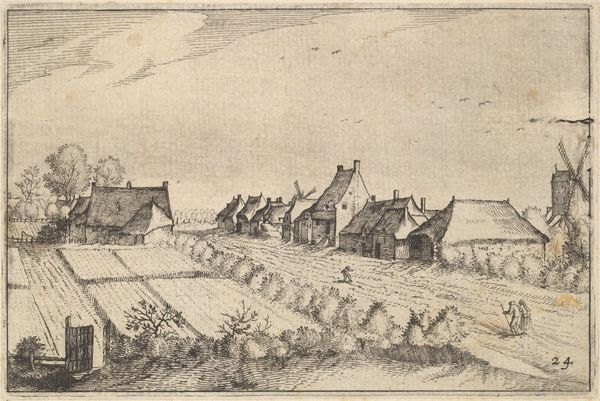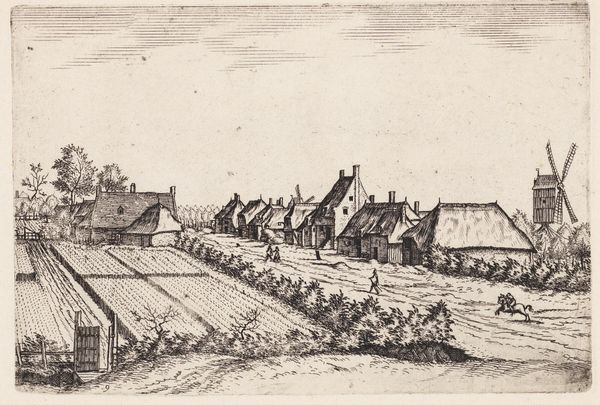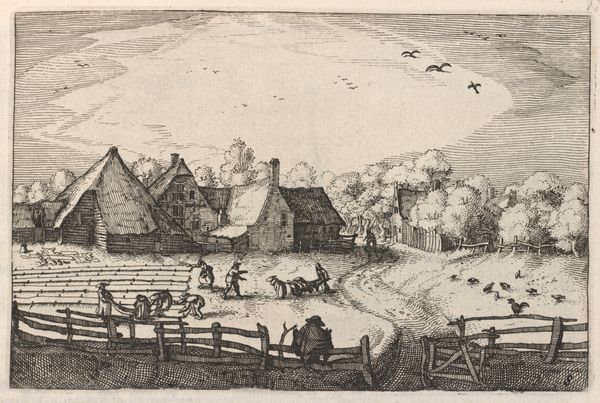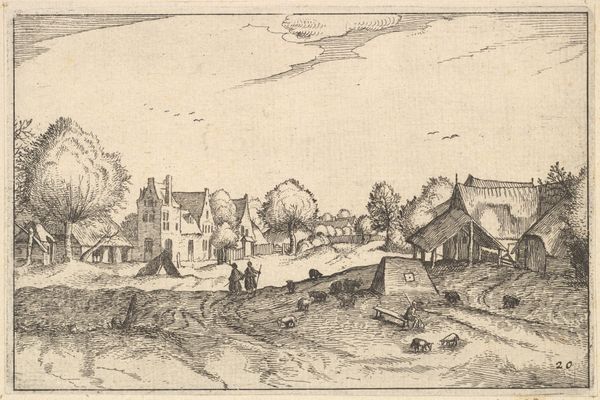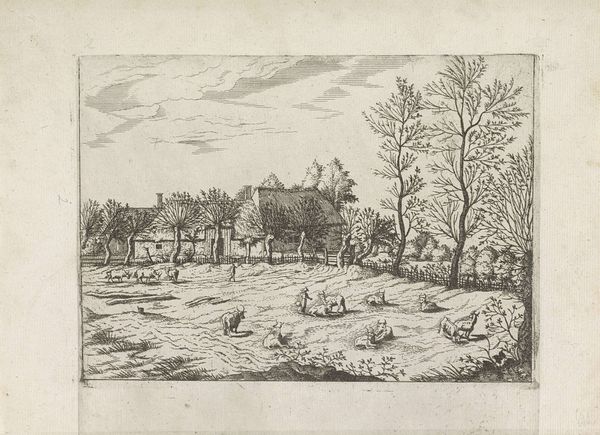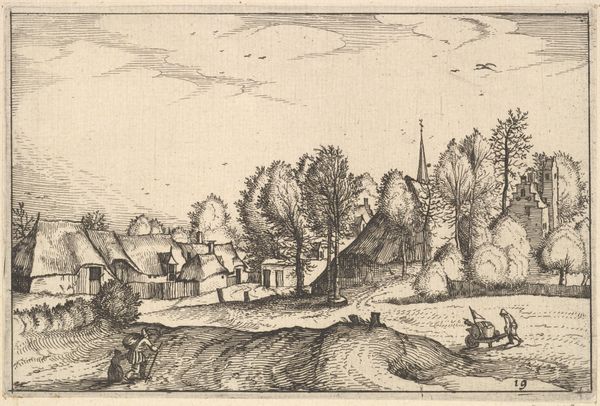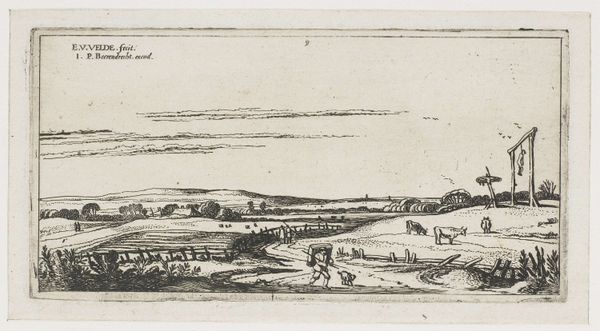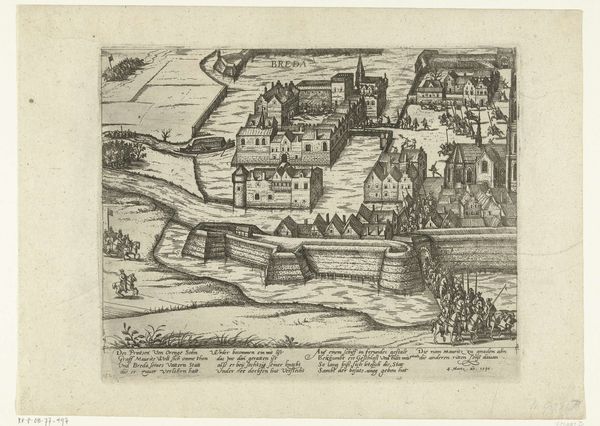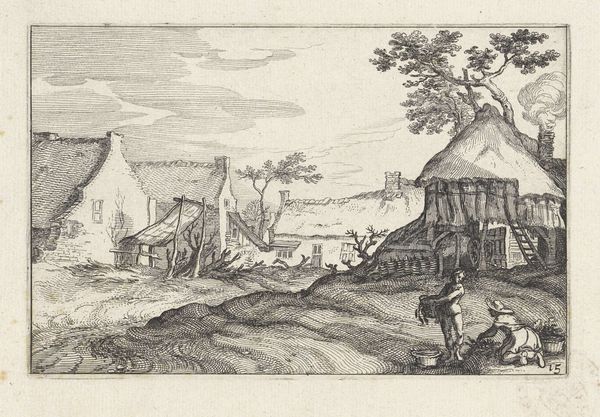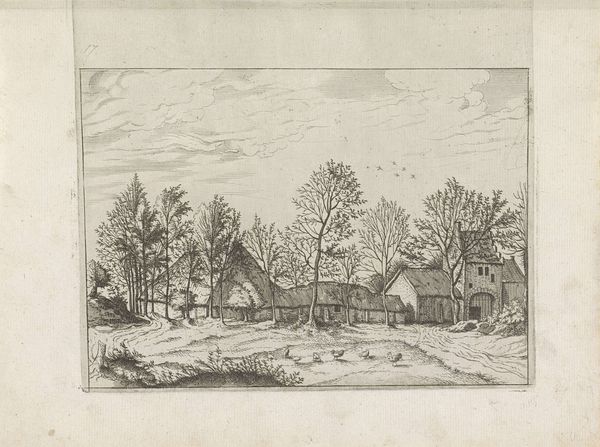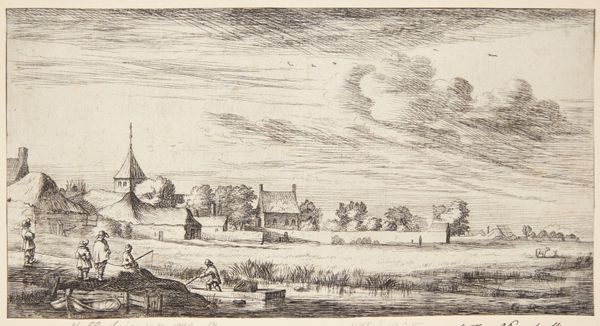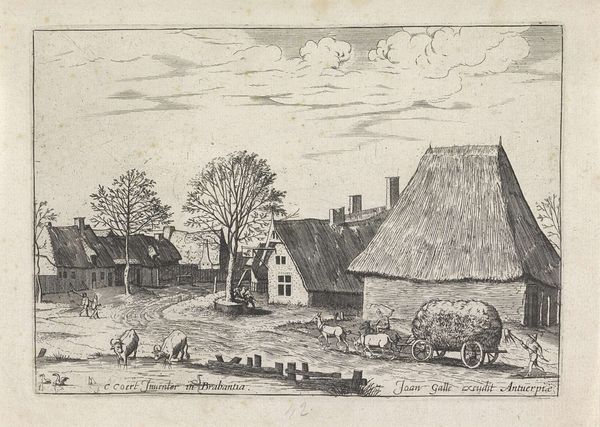
Fields with a Village Road with Post Mill, from the series The Small Landscapes (Multifariarum Casularum) 1559 - 1561
0:00
0:00
drawing, print, relief-print, etching, paper, engraving
#
drawing
#
medieval
# print
#
relief-print
#
etching
#
landscape
#
house
#
paper
#
northern-renaissance
#
engraving
Dimensions: Plate (width given; full plate line not visible): 8 in. (20.3 cm) Sheet: 6 15/16 × 9 7/8 in. (17.6 × 25.1 cm)
Copyright: Public Domain
Editor: This is Johannes van Doetecum I's "Fields with a Village Road with Post Mill, from the series The Small Landscapes," created between 1559 and 1561. It's an etching and engraving printed on paper and depicts a very detailed rural scene. I am struck by the detail – especially given its small size. What stands out to you? Curator: I'm drawn to the meticulous rendering of labor in this seemingly simple landscape. Look at the way the fields are divided, the textures meticulously etched to represent different crops, or stages of cultivation. It points to a society deeply engaged with the production of resources. How might the windmill also underscore the role of technology in shaping the means of production? Editor: That's fascinating! I hadn't really considered the windmill as a piece of technology. I was mostly seeing it as picturesque. Are you suggesting the print isn’t just showing us a pretty view, but making a statement about work and industry? Curator: Exactly! Notice the human figures; they are deliberately placed in the fields and on the road, integrating them into this system of production and exchange. This work speaks to the vital importance of materiality within art. Editor: So, it's about more than just aesthetics; it's about the systems of labor and resource management. It is kind of surprising that so much social context could be packed in one print. Curator: Precisely. Analyzing the process – the meticulous etching and engraving – connects us to the skilled labor involved in its making. Every line reveals how art and the economy intersect. Editor: I now see how looking at the materials and how it was made provides a fascinating lens! Thanks for that insight. Curator: My pleasure. Considering how and why things are made really changes the way you understand art’s place in the world.
Comments
No comments
Be the first to comment and join the conversation on the ultimate creative platform.
